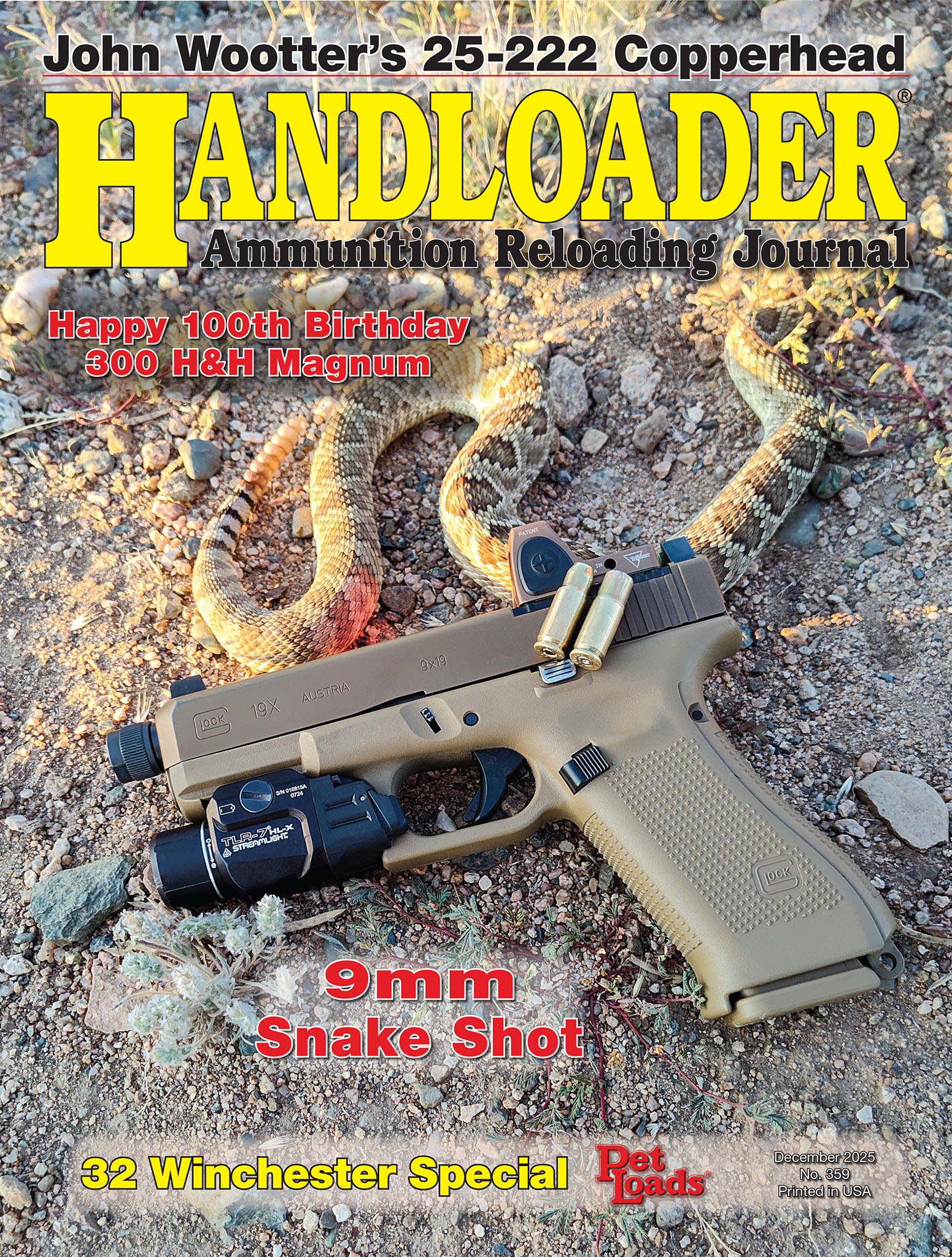This tale of two cartridges begins in 1973, when the first range for metallic silhouette rifle competition was built near Nogales, Arizona. Made of hardened steel, the four life-size targets range in size from 11x13 inches for the chicken to 19x23 inches for the ram. Target distances in meters are 200 (chicken), 300 (pig), 385 (turkey) and 500 for the ram, which weighs upward of 60 pounds. The shooting is from the unsupported, offhand position, and all targets must be knocked completely off their stands. Maximum weights, including scope, are 10 pounds 2 ounces for the Silhouette Rifle class and 9 pounds for the Hunting Rifle class. Cartridges of 6mm or larger caliber can be used.

This Savage Model 110 Long Range Hunter in 6.5 Creedmoor has a 26-inch, 1:8 twist barrel with an on-off adjustable compensator. The scope is a Burris Black Diamond 6-24x.
Early on, the 243 Winchester proved to be a bit weak for toppling hard-set rams, and the 308 Winchester delivered a bit more recoil to the shoulder than desired. The 308 Winchester case necked down for .264-inch, match-grade 140-grain bullets had plenty of punch while being easier on the shoulder as well. Word spread rapidly, and before long, the wildcat had become popular in other types of competition, with David Tubb using a rifle chambered for it to win the across-the-course Highpower championship at Camp Perry. The 6.5-308 began to catch on with hunters as well.

This Model 700 with a 26-inch, 1:8 twist barrel in 260 Remington was built in the Remington Custom Shop when it was located at the Ilion, New York factory. The scope is a Bausch & Lomb Elite 4200 2.5-10x.
Remington domesticated more wildcat cartridges than any other company with the 6.5-308 added to the family when it was accepted by SAAMI (Sporting Arms and Ammunition Manufacturers’ Institute) in 1997. Renamed the 260 Remington, it was loaded with a 140-grain Pointed Core-Lokt bullet at 2,750 feet per second (fps). Initially offered in the Model 700 BDL rifle and the Model Seven carbine, it was soon available in the 40-XB Rangemaster target rifle as well as the Model 700 VLS Varmint, the latter with a laminated wood stock and a heavy 26-inch barrel. Ruger was already chambering Model 77 Mark II rifles for the 6.5x55 Swedish, so adding the 260 Remington came easy. Cooper of Montana, Savage, Browning, Howa, Kimber, New Ultra Light Arms, Tikka and others eventually followed. A 2014 National Rifle Association National Championship equipment survey revealed the 260 Remington as the most popular cartridge in both across-the-course High Power and rifle metallic silhouette competitions. Needless to say, the 260 Remington was riding high.
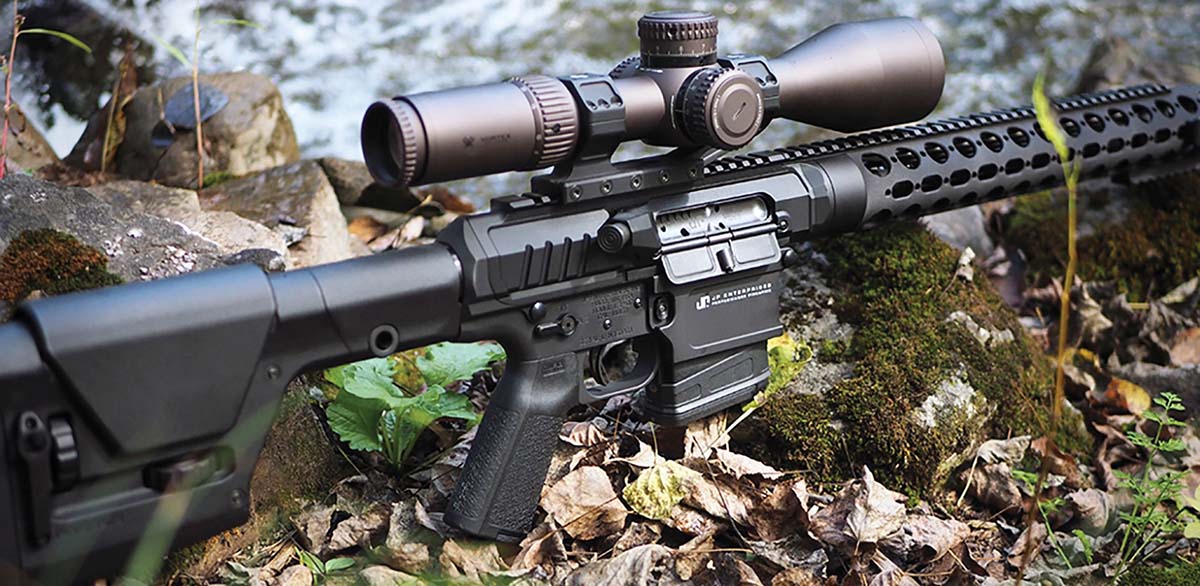
This AR-10 rifle, called the LRP-07 by its builder, JP Enterprises, is intended for long-distance competitive shooting, and many have been chambered for the 260 Remington, 6.5 Creedmoor and 6mm Creedmoor.
In 2008, Hornady joined the same chase with the 6.5 Creedmoor, but the 260 Remington had such a head start that it took quite a few years for the new cartridge to catch up. Among rifle companies, Ruger was first out of the starting gate with the 6.5 Creedmoor in the Model 77 Hawkeye. I received one of the first built, and its 26-inch barrel squeezed maximum velocity from the cartridge. The ammunition introduced by Hornady was the company’s first Superformance loading, although at the time it was not identified as such. I was impressed when my Oehler 33 indicated a velocity of 3,029 fps for the 129-grain SST bullet. Rifle and load worked nicely during a 2007 pronghorn hunt in the Texas Panhandle. I still have the rifle.
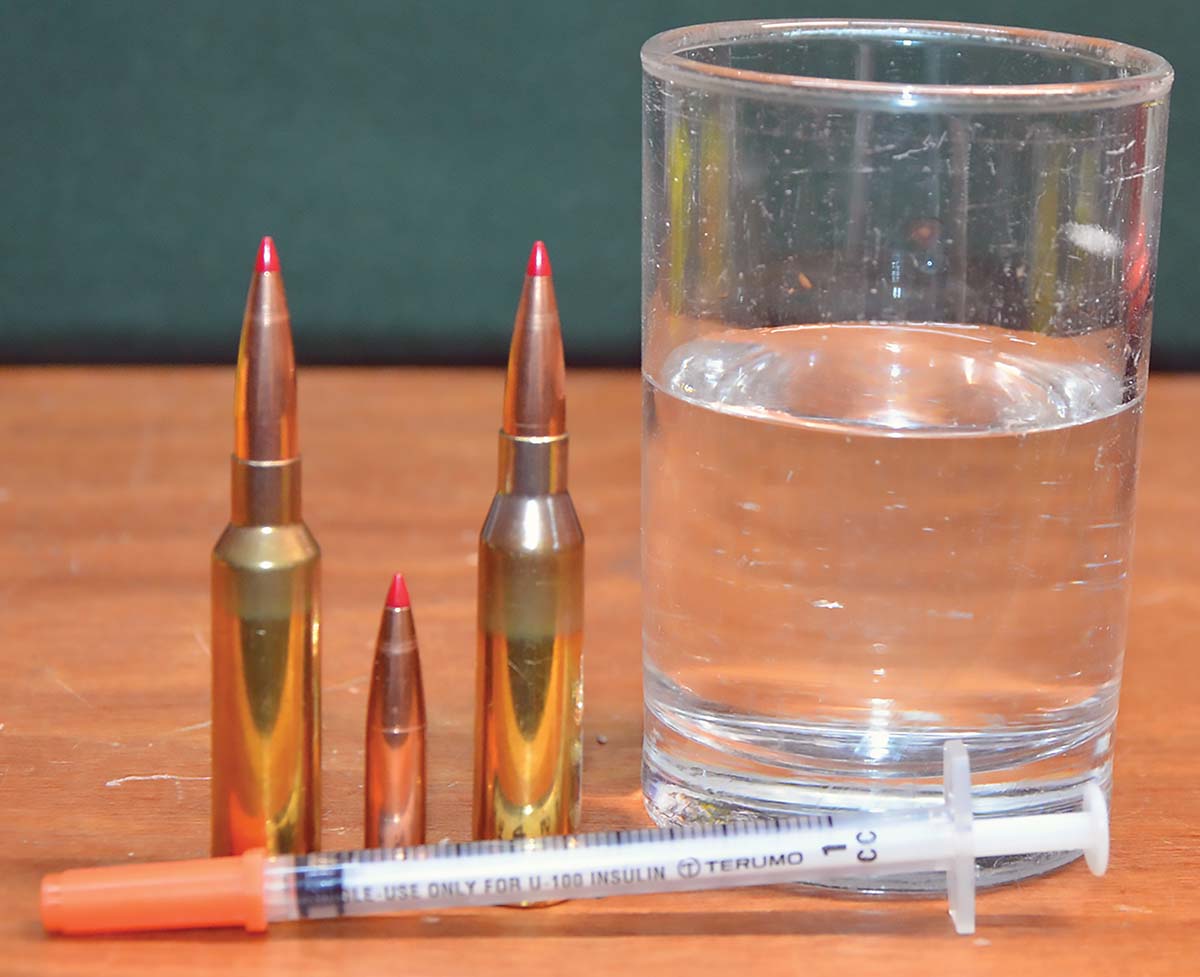
Net capacities were determined by seating Hornady 147-grain ELD-M bullets in unprimed cases to a cartridge length of 2.825 inches. Weighing them empty and weighing them again after a hypodermic syringe was used to reach through their flash holes and fill the powder cavity with water, and subtracting the former from the latter gave net capacities.
As popular opinion goes, due to differences in rifling twist rates, a rifle in 6.5 Creedmoor will stabilize the longest bullets of its caliber while a rifle in 260 Remington will not. This does not always hold true. While SAAMI rifling twist rates are 1:9 for the 260 Remington and a quicker 1:8 for the 6.5 Creedmoor, the barrels of several Remington 260 rifles I have shot throughout the years had a 1:8 twist. This also held true for the Remington 700 used by Hornady and the Savage 12VSS used by Sierra for shooting 260 Remington velocities for their reloading manuals.
In a world filled with variables, this by no means implies that all Remington and Savage rifles in 260 Remington will have a 1:8 twist. We do know that it was not unusual for Remington to make unannounced changes in rifling twist rates through the years. When the company introduced the 244 Remington in the Model 722 rifle in 1955, it had a 1:12 twist, and the 90-grain Bronze Point was the heaviest (longest) bullet loaded in the cartridge. During the final years of Model 722 production, barrels in that caliber were quietly given a 1:9 twist. The Model 725, introduced in 1958, is a dressed-up version of the Model 722. My Model 725 in 244 Remington was built in 1960 and has a 1:9 twist. Actual twist rate can vary quite a bit for rifles in 260 Remington and 6.5 Creedmoor built by various companies. A Ruger Model 77 Mark II in 260 Remington I shot years ago had a 1:8 twist, and a Browning A-Bolt in 260 Remington used on a caribou hunt had a slow 1:10 twist.
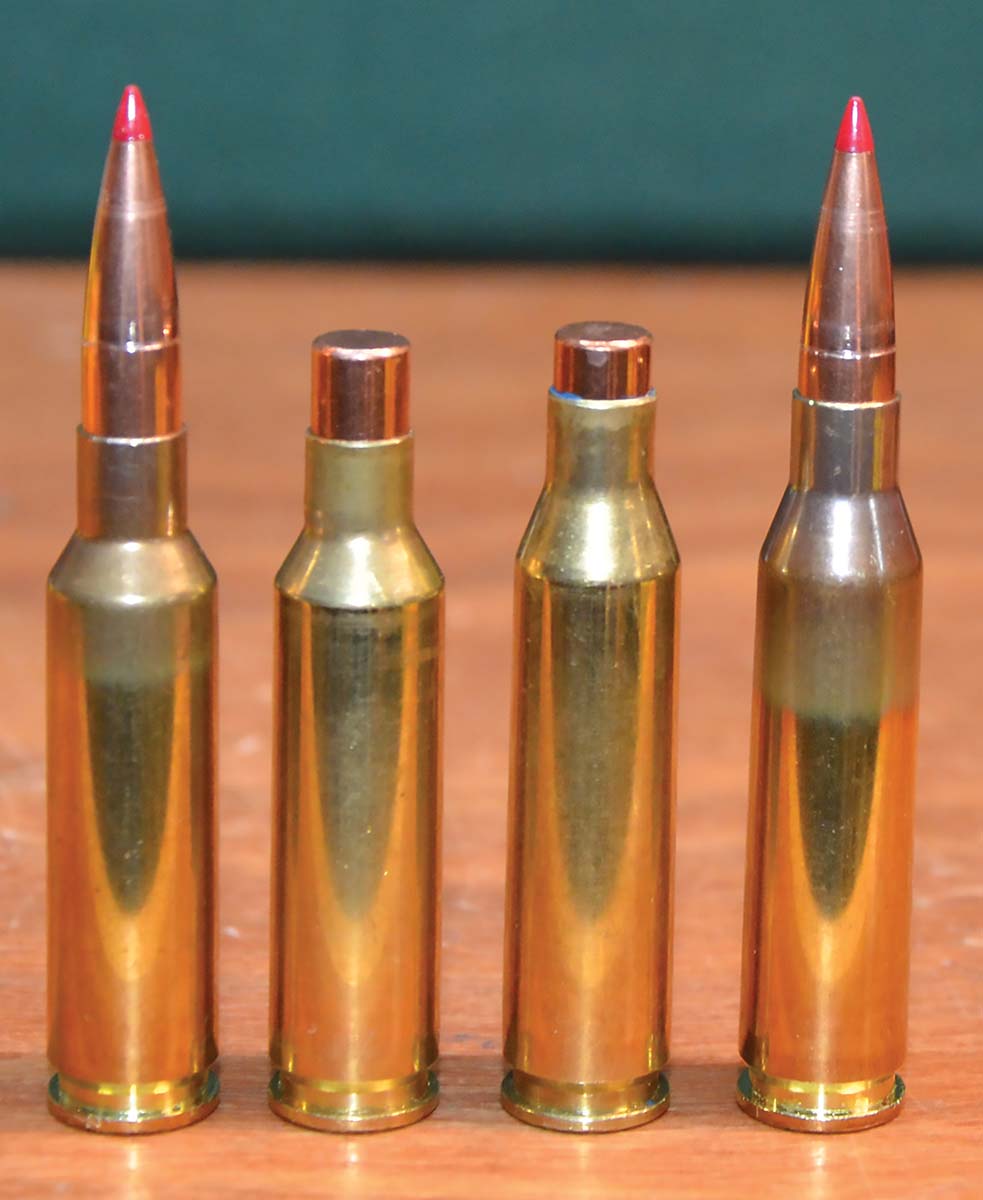
Flatbase bullets seated backward indicate differences in chamber throat lengths of the 6.5 Creedmoor (left) and the 260 Remington (right).
As another popular misconception has it, long-for-caliber bullets have to be seated so deeply in the 260 Remington that the mouth of its case rests beyond the full-diameter shank of the bullet and out over its ogive. You cannot prove that one by me, and if it were true, those who wrote cartridge introductions in various reloading manuals failed to mention it. Standard-production Remington rifles chambered for the 260 I have owned through the years include a Model Seven with an 18.5-inch barrel, a Model 700 Varmint with a heavy, 26-inch barrel and a Model 700 Titanium with a titanium receiver, Kevlar stock, and a 22-inch barrel. The heavy-barrel rifle digested a lot of handloads containing Sierra 140-grain MatchKing bullets, and not once did I experience that problem. The finest rifle in 260 Remington I have owned was a Cooper Model 54 with a nicely figured stock of English walnut and a 1:8 rifling twist rate. Its chamber throat length was the same as that of various Remington rifles I had shot. Three-shot groups carved by that rifle with several bullets were well inside a half inch at 100 yards, with some bordering on quarter-minute-of-angle. It absolutely loved the Swift 130-grain Scirocco, a bullet that accounted for several pronghorns and a fairly decent whitetail deer. I should not have let that rifle get away.
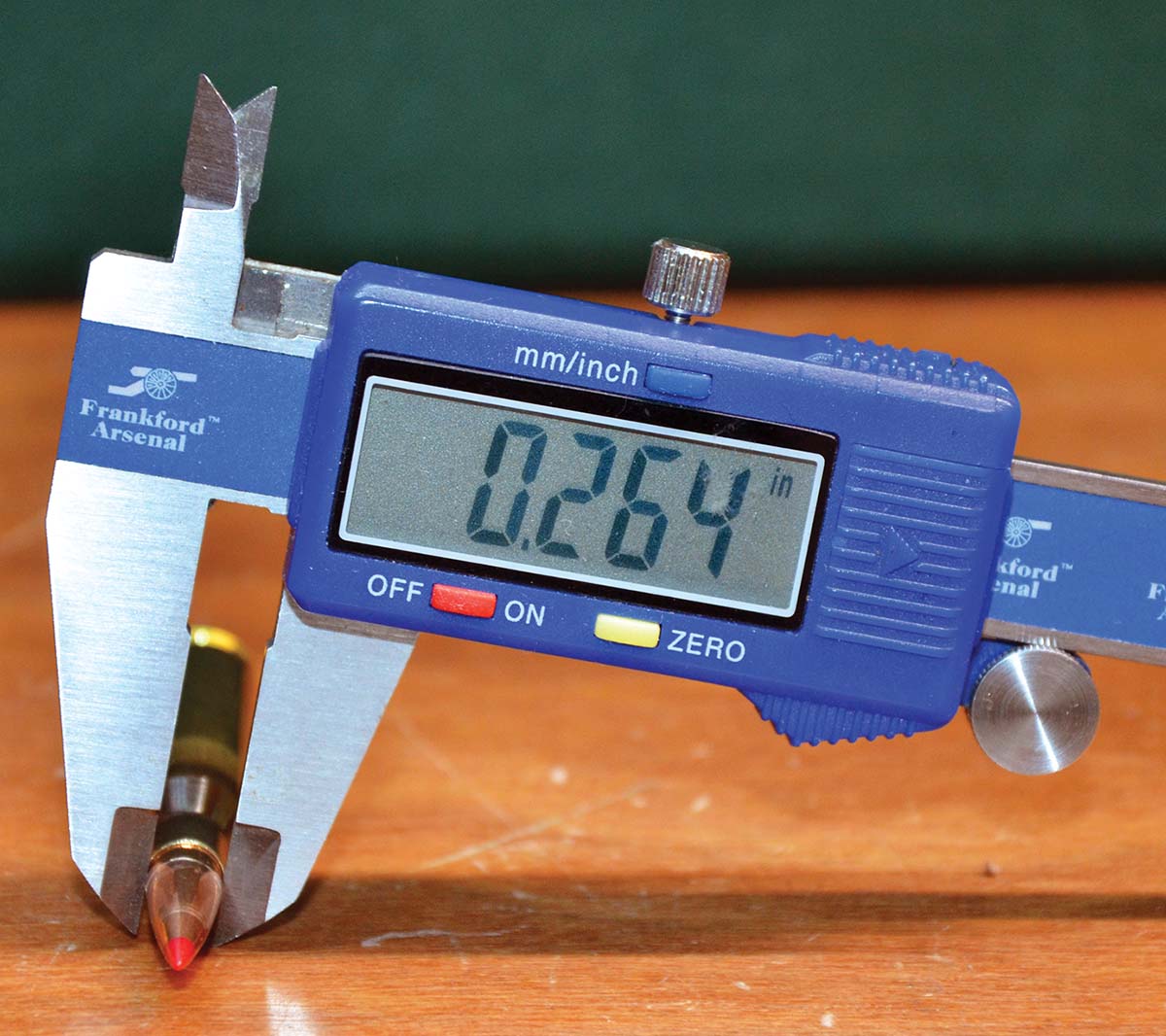
Contrary to a popular rumor, when long-for-caliber bullets are seated in the 260 Remington case, the mouth of the case does not necessarily rest beyond the full-diameter shank of the bullet and over its ogive. The bullet could be seated for an even shorter cartridge length, and the mouth of the case would still rest shy of the beginning of its ogive.
Those rifles are long gone, but I still have a 260 built when the Remington custom shop was at the old Ilion, New York factory. The short Model 700 action has a Kevlar-reinforced fiberglass stock and a medium-heavy 26-inch barrel with a 1:8 twist. The Hornady 147-grain ELD-Match is the longest 6.5mm bullet in my loading room, and with it seated to a cartridge length of 2.825 inches, the mouth of a Lapua case measuring 2.030 inches long rests .124 inch shy of the beginning of the ogive of that bullet. In other words, that bullet could be seated for a cartridge length as short as 2.702 inches, and the mouth of the case would still rest shy of the beginning of the ogive of the extremely long Hornady bullet.
The 6.5 Creedmoor chamber does have a longer throat than the 260 Remington chamber. To compare throat lengths, I seated flat-base bullets in the two cases at overall cartridge lengths that had the base of the bullets resting firmly against the rifling of the barrel when chambered. With the Hornady 147-grain ELD seated to a cartridge length of 2.825 inches in both cartridges, bullet free-travel prior to rifling engagement was .041 inch for the 6.5 Creedmoor and .017 inch for the 260 Remington. Some bullets shoot more accurately when seated for very little jump, and that’s not possible with the 6.5 Creedmoor unless the cartridge length is increased beyond the SAAMI maximum of 2.825 inches. This would not be an issue for rifles with magazines long enough to handle the greater cartridge length. Bullets of monolithic construction often require more jump for best accuracy, and while it could be increased in my Remington 700 in 260 Remington, it could be increased even more in the 6.5 Creedmoor.
Last but by no means least, the criticisms leveled against the 260 Remington over the years have to do with seated bullets occupying much of its powder space. The fact that the same holds true for the 6.5 Creedmoor is seldom mentioned. With the Hornady 147-grain ELD Match seated in both cases for a cartridge length of 2.825 inches, its base rests about .090 inch behind the shoulder of the 6.5 Creedmoor case compared to approximately .180 inch for the 260 Remington. While the bullet does occupy more space inside the 260 Remington case, net capacity with a bullet seated is what matters, and as can be seen in Table V of this report, the Remington cartridge has a slight advantage there because its gross capacity is a bit greater. Simply stated, when two cartridges having basically the same net powder capacity are loaded with bullets of the same weight at the same chamber pressure and fired in barrels of the same length, velocity will be the same or at least quite close to it.
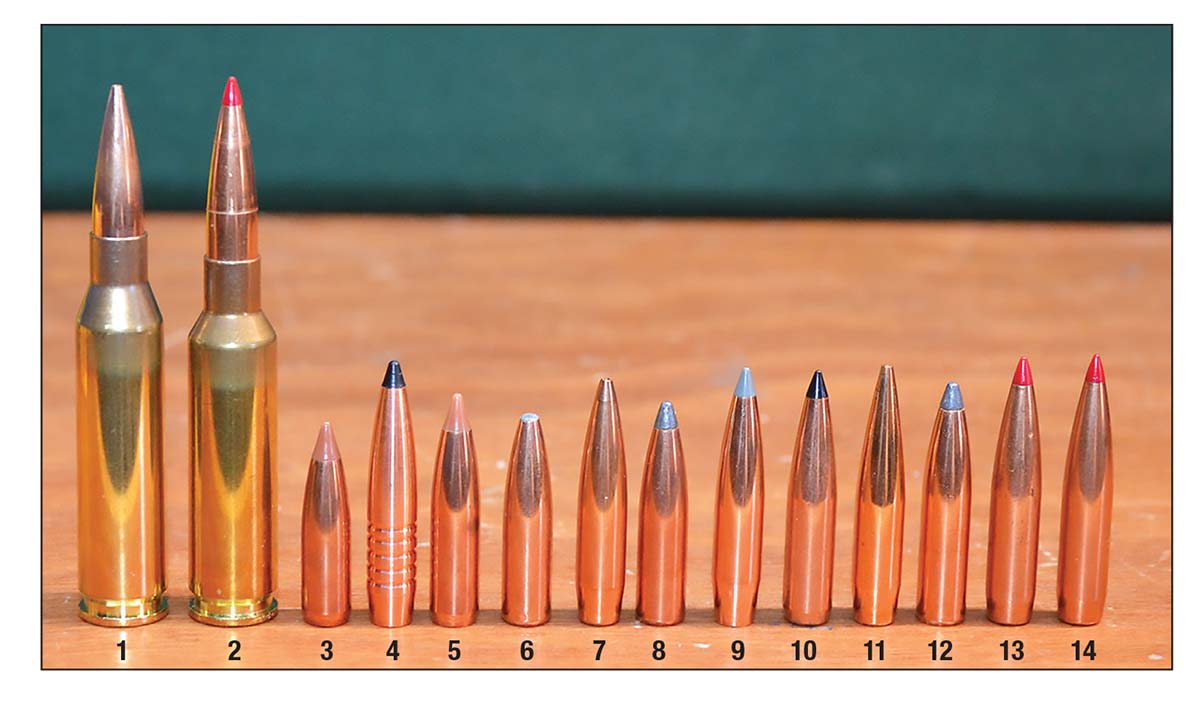
Bullets shot for this report in the (1) 260 Remington and (2) 6.5 Creedmoor are: (3) 100 Nosler Ballistic Tip, (4) 125 Lehigh Defense TME, (5) 120 Nosler Ballistic Tip, (6) 120 Swift A-Frame, (7) 123 Lapua Scenar HPBT, (8) 125 Nosler Partition, (9) 129 Nosler AccuBond LR, (10) 130 Swift Scirocco II, (11) 140 Berger ELD Hunting, (12) 140 Nosler Partition, (13) 143 Hornady ELD-X and (14) 147 Hornady ELD-M.
The magazines of short-action rifles built by Remington, Ruger, Savage and others are long enough to handle both cartridges loaded to a length of 2.820 inches. However, 2.800 inches is a good workable maximum for both cartridges. There is one other thing. SAAMI maximum pressures are 60,000 pounds per square inch (psi) for the 260 Remington and 62,000 psi for the 6.5 Creedmoor – this may explain why velocities in some reloading manuals tend to be a bit higher for the Creedmoor. The 260 Remington could safely be loaded to the same pressure for equal velocities, but pressure-tested data would have to be exceeded, and it is something I cannot recommend.
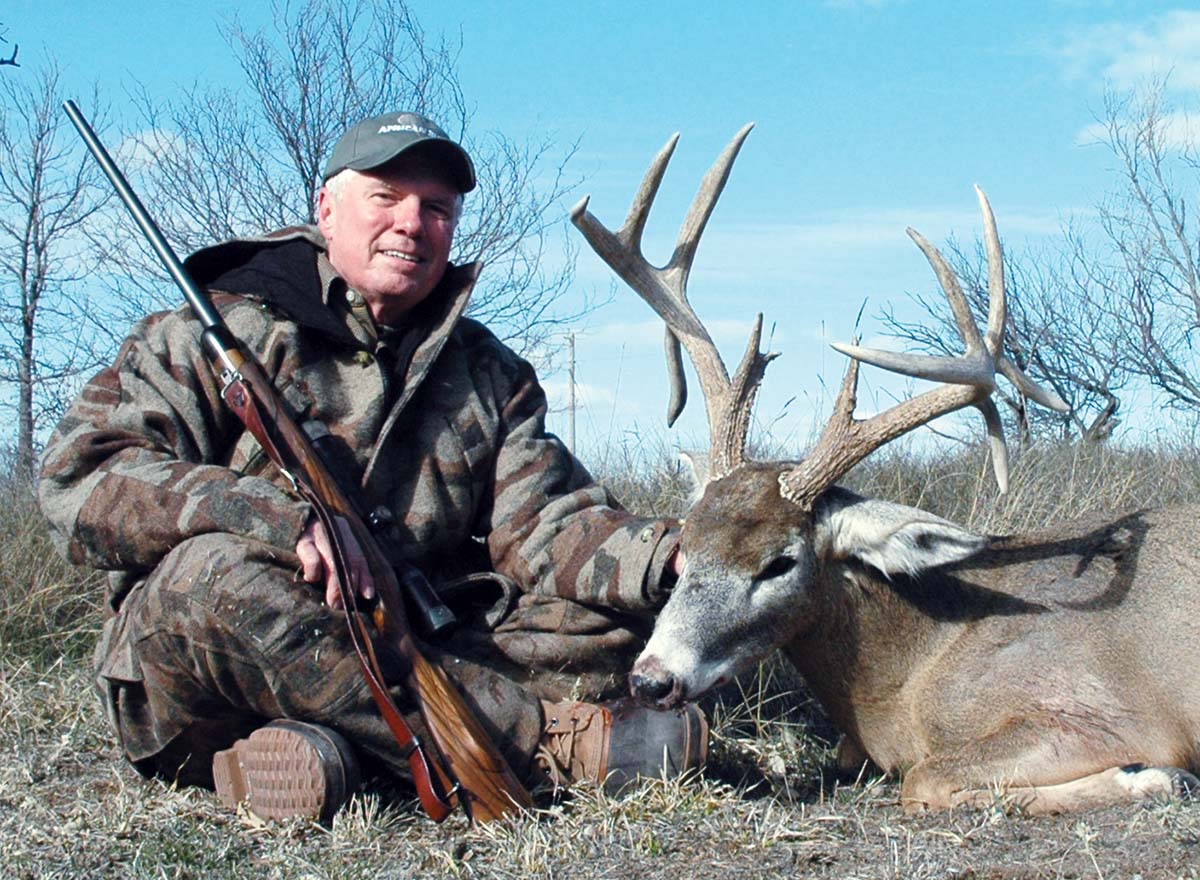
The Cooper Model 54 in 260 Remington that Layne used to take this whitetail deer at just over 250 yards was one of the most accurate factory- built rifles he has owned. The 130-grain Swift Scirocco bullet leaving the 24-inch barrel at close to 3,000 fps did an excellent job.
In 2008, recommended load data was printed on introductory boxes of 6.5 Creedmoor ammunition loaded by Hornady with the 129-grain SST bullet. If memory serves me correctly, the powder was H-4350, but I do not remember the charge weight. While it is still an excellent choice for most bullet weights in the 6.5 Creedmoor as well as the 260 Remington, quite a few other options with similar burn rates are popular today. To name but a few, Hybrid 100V, Vihtavuori N550, Vihtavuori N560, Reloder 19, Reloder 22, Reloder 17, Superformance, Hunter and StaBALL 6.5 are excellent choices.
As bullets go for use on deer, pronghorn, and other game similar in size, those weighing from 120 to 130 grains are excellent choices. Options in that weight range include the Lehigh Defense 120-grain Tipped Maximum Expansion, the Nosler 125-grain Partition, the Nosler 129-grain AccuBond LR, the Hornady 129-grain SST and the Swift 130-grain Scirocco II. When exiting the barrel at 2,900 fps and zeroed three inches high at 100 yards, the Swift bullet strikes about three inches below point of aim at 300 yards and is still moving along at just over 2,400 fps. Energy delivery at 300 yards is close to 1,700 foot-pounds (ft-lbs). The Hornady 129-grain SST and Nosler 130-grain AccuBond LR perform about the same. Drift in a 10-mile-per-hour crosswind for the three bullets is also about the same.
Many companies offer 6.5 Creedmoor ammunition, and while fewer options are available for the 260 Remington, the number of companies loading it today indicates the cartridge is far from dead. They include Remington (140 Pointed Core-Lokt and 142 Sierra MatchKing), Berger (130 Hybrid OTM Tactical), Lehigh Defense (120 Tipped Maximum Expansion & 130 Controlled Chaos), Federal (140 PSP & 142 MatchKing), Nosler (120 Ballistic Tip, 130 AccuBond & 140 Ballistic Tip), Hornady (129 SST & 130 ELD Match), Barnes (120 TSXBT & 140 OTMBT), DoubleTap (129 SST) and Fiocchi (129 SST). While writing this, I queried all those companies except DoubleTap and Fiocchi. They all had 260 Remington and 6.5 Creedmoor ammunition in stock and ready to ship.
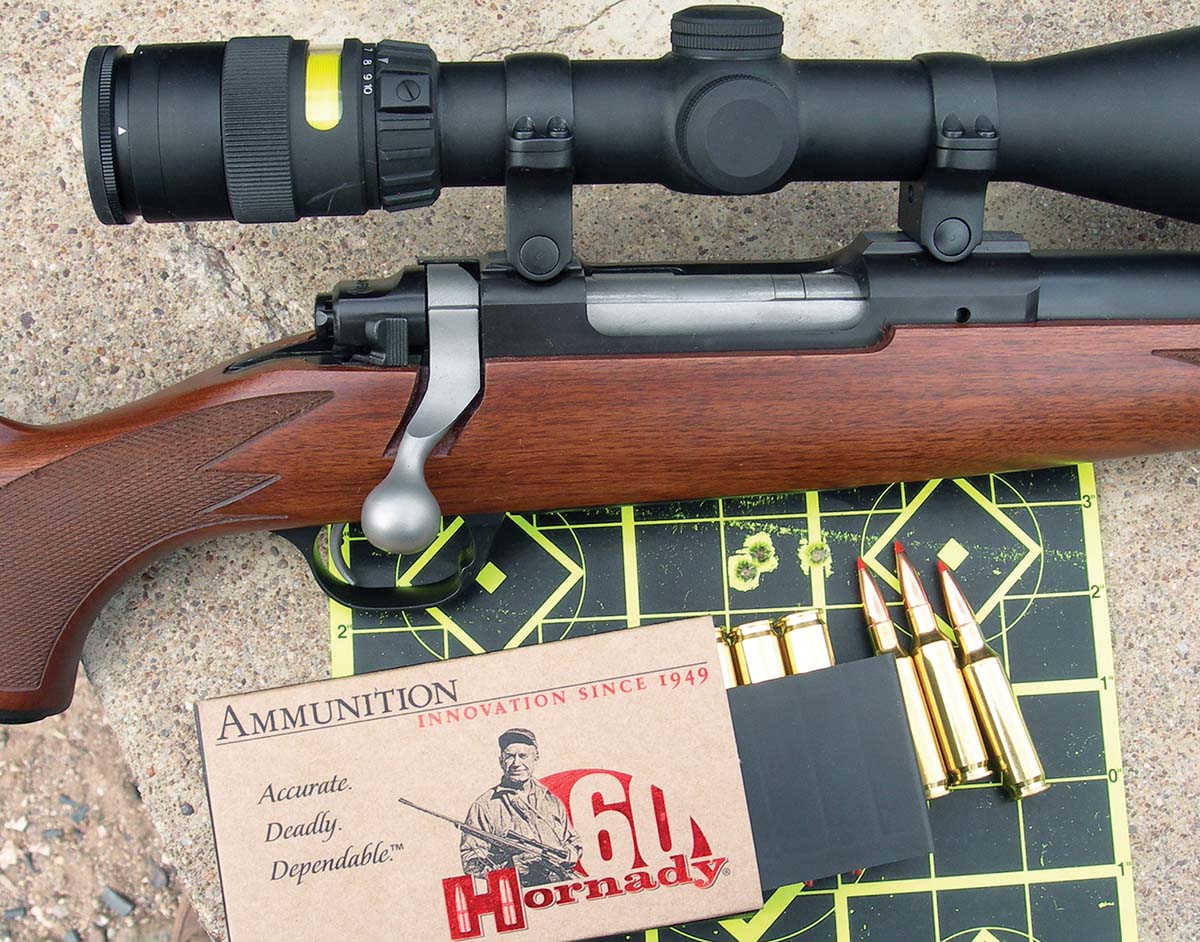
This three-shot group, fired while checking the zero of his rifle on the afternoon prior to his Texas pronghorn hunt, was typical of the accuracy of both rifle and ammunition.
The barrels of my Remington 700 in 260 Remington and Ruger 77 in 6.5 Creedmoor are the same length at 26 inches, so the initial plan was to shoot fresh loadings of the two cartridges in those rifles for this report. The older my ears become, the more they appreciate that wonderful invention called the sound suppressor, so when given the opportunity to shoot a new Savage 110 Long Range Hunter in 6.5 Creedmoor with a 26-inch barrel with 1:8 twist, I jumped on it. When introduced back in 2010, that rifle was advertised as having a 26-inch barrel, but that included a muzzle brake, and the actual barrel length was 24 inches. I am not sure when the change took place, but the actual barrel length was eventually changed to 26 inches for all calibers, and it remains so today. The barrel has 9⁄16 x28 threads, and it comes with an adjustable (on/off) muzzle brake attached. The Long Range Hunter is also available in 6.5-284 Norma, 280 Ackley Improved, 7mm Remington Magnum, 308 Winchester, 300 WSM, 300 Winchester Magnum, 300 PRC and 338 Lapua Magnum. When shooting the rifle for accuracy, I used a Talley Picatinny rail and rings to attach a Burris Black Diamond 6-24X scope. The Bausch & Lomb Elite 4200 2.5-10x scope that the Model 700 has worn for many years is so good that the thought of replacing it has never crossed my mind.
While the performance of the two cartridges I have been comparing is the same, the 6.5 Creedmoor has become far more successful for a couple of reasons. For one, Hornady has done a much better job of promoting its cartridge than was the case for Remington. Whereas the 6.5 Creedmoor was a really big deal in Grand Island, Nebraska, the 260 Remington was never anything more than one among a long lineup of fine cartridges developed in Ilion, New York.Today’s difference in rifle options is also a determining factor. While almost every rifle company on the planet offers the 6.5 Creedmoor, very few presently build rifles around the 260 Remington. A quick web search revealed Savage, Seekins Precision, Daniel Defense, Tikka, Barrett and Beretta offering the 260, but there may be more. Another search turned up many used rifles chambered for the cartridge. A friend who is into long-distance competition has an AR-10 in 260 Remington built by JP Enterprises. One of the finest precision rifles I have examined, the LRP-07, as the company calls it, drives tacks and is also available in 6.5 Creedmoor and 6mm Creedmoor.
The 260 Remington and 6.5 Creedmoor are great cartridges. The fact that I have owned rifles chambered for both for a long time is a sure sign of my feelings toward both.
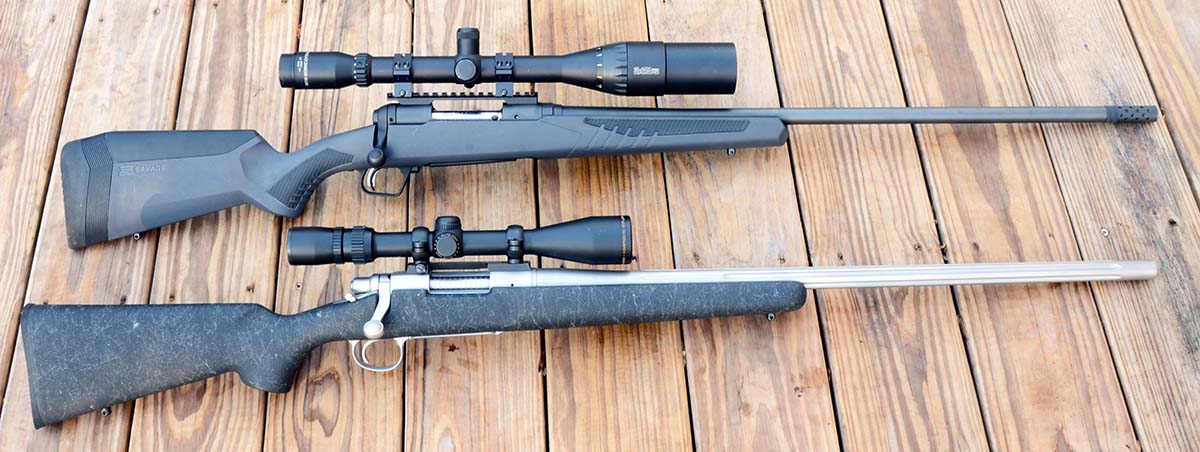









.jpg)
.jpg)
.jpg)


